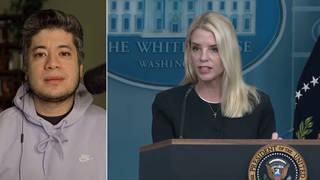
U.S. plans to spend about $2.5 billion to build new bioterrorism defense laboratories around the country, many in densely populated areas. 6,000 new employees may soon be given access to some of the world’s most dangerous pathogens. The New York Times revealed yesterday that Dr. Steven Hatfill helped build a U.S. secret germ lab even after he was cited as a suspect in the 2001 anthrax attacks.
The New York Times reported yesterday that the U.S. has been secretly building a mobile germ warfare plant that may have violated the 1975 global ban on germ weapons. It was built to help U.S. forces detect such mobile units in Iraq.
The Times reported that among those working on the top secret-project was Dr. Steven Hatfill, who has been identified by the Justice Department as a “person of interest” in the 2001 anthrax attacks.
Hatfill continues to be under constant surveillance even though no formal charges were ever issued against him.
The Times also reported that Hatfill continued working on the project after he was fired in March 2002.
Meanwhile a series of investigative articles called “Living Terror,” UPI reporters Dee Ann Divis and Nicholas M. Horrock reveal that the U.S. plans to spend about $2.5 billion to build bioterrorism defense laboratories around the country.
UPI found roughly 20 high-level biodefense labs and proposals to double that number through new construction and upgrades. Many of the new facilities are to be located in densely populated cities, college campuses and residential neighborhoods.
The article also discusses how the new Bioterrorism Preparedness and Response Act of 2002 includes an exemption clause to the Freedom of Information Act. The clause makes it illegal for a federal agency to reveal information about who has material or what they are doing to them.
UPI reports,”Most important, no information is to be made available about the 'release of a listed agent or toxin.'”
- Dee Ann Divis, science and technology editor UPI. She is the co-author of UPI’s “Living Terror” series: Pt. 1 || Pt. 2 || Pt. 3 || UPI’s List of Laboratories
- Pat Clawson, friend and spokesperson for Dr. Steven J. Hatfill
- Dr. Meryl Nass, anthrax expert, physician and writer. Nass identified the 1979 anthrax outbreak in Zimbabwe (then Rhodesia) as bio-terrorism. It was the largest outbreak of human anthrax in history. She developed a model for analyzing epidemics to assess whether they are natural or man-made. Founder of the website www.anthraxcaccine.org












Media Options